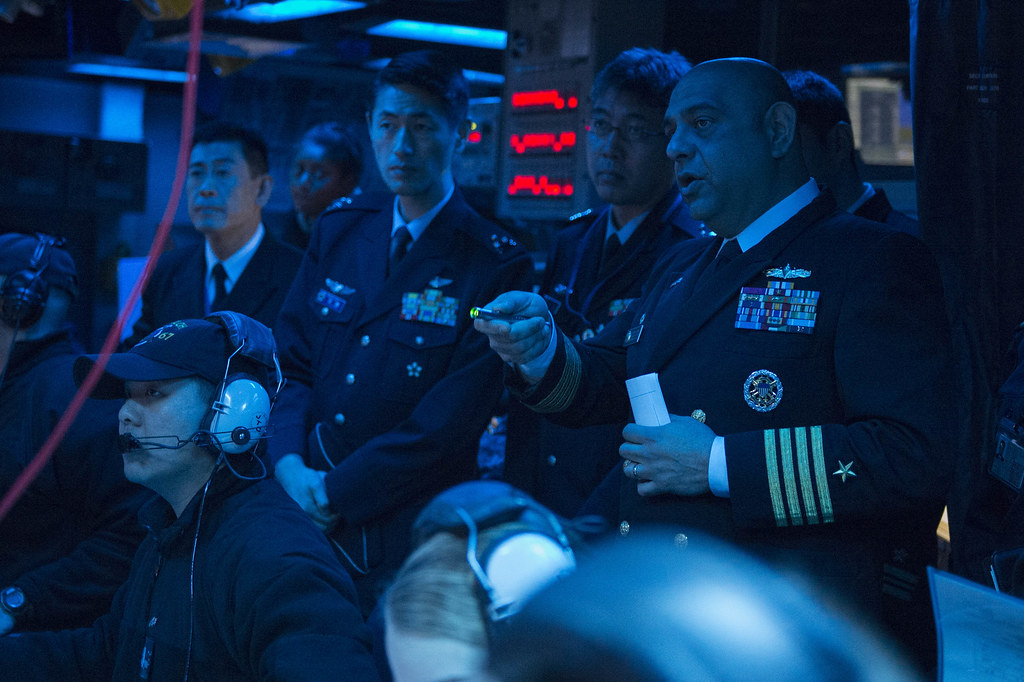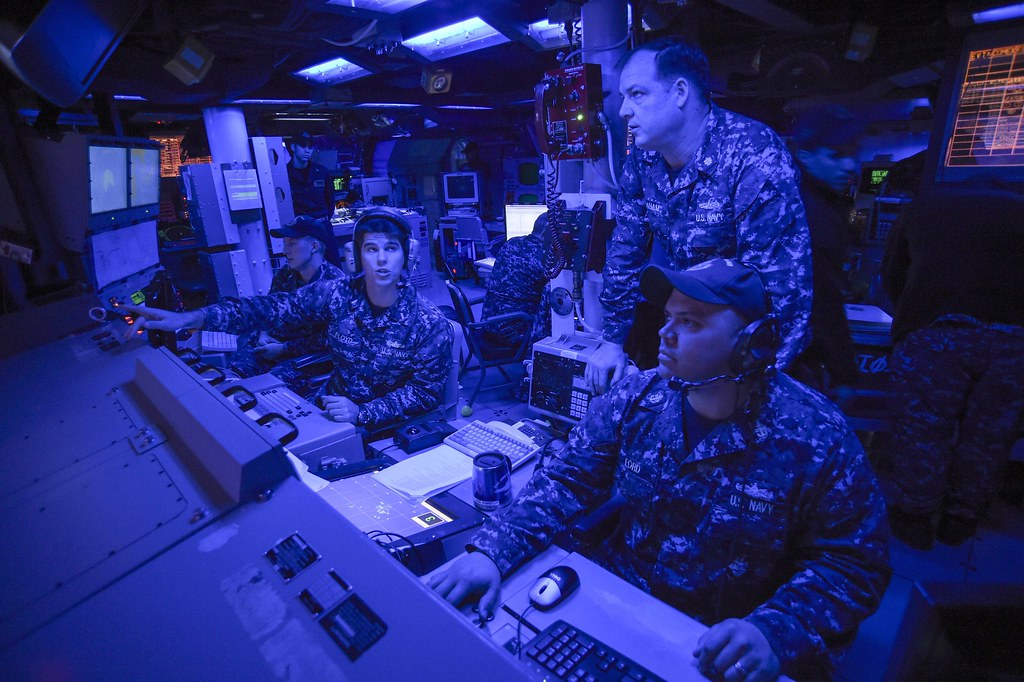By Mass Communication Specialist 3rd Class Ricardo R. Guzman
<< Capt. Kurush Morris, right, commanding officer of the guided-missile cruiser USS Shiloh (CG 67), explains operations to Japan Self-Defense Force officers during a Fleet Synthetic Training - Joint exercise. (U.S. Navy/MC3 Raymond D. Diaz III)
YOKOSUKA, Japan - U.S. and Japan forces participated in a Fleet Synthetic Training-Joint (FST-J) exercise, Feb. 23-27.
FST-J provided training to personnel from Commander, Task Force 70, the U.S. Army and Air Force, and the Japan Maritime Self-Defense Force and Japan Air Self-Defense Force in strike force level proficiency, operations, joint interoperability and mission rehearsal for ships, aviation, and submarine simulators.
"This is a joint and bilateral synthetic training exercise," said Lt. Cmdr. Phillip Moore, CTF 70's ballistic missile defense (BMD) officer. "We're working very closely with our regional ally, Japan, and are currently practicing and conducting our periodic certifications of BMD - tactics, techniques and procedures in a realistic, multi-warfare environment."
Training exercises are conducted using models and simulations to replicate real-world command and control systems, which allow units to develop operator-level proficiency and validation of tactics, techniques and procedures prior to participation's of real-world events or joint training exercises.
"FST-J provides an excellent opportunity for Japan Self-Defense Force (JSDF) and U.S. forces to operate in a complex and multi-warfare tactical environment," said Lt. j.g. Weston Ford, BMD officer aboard the Arleigh Burke-class guided-missile destroyer USS John S. McCain (DDG 56). "Ultimately, this will enhance our bilateral relations and interoperability between the U.S. and JSDF when defending against hostile threats."
Lt. j.g. Weston Floyd, ballistic missile defense officer, Cmdr. Chad Graham, executive officer, and Chief Operations Specialist Chris Ford prepare to participate in the exercise aboard the guided-missile destroyer USS John S. McCain (DDG 56). (U.S. Navy/MC1 Joshua Hammond) >>
The U.S. and Japanese forces encountered computer generated environmental conditions, political state of affairs and foreign military provocations without having to operate at sea.
"In the past, FST-J training has been more focused on executing the BMD mission from a ship's perspective," said Moore. "We have expanded BMD training this year to include as many of the players who we have to interact with when we execute an actual mission."
FST-J enables the Navy and its allies in different geographical areas to gain training efficiencies at sea by conducting training exercises and synthetic pierside scenarios, and plays a vital role in the qualification, readiness and interoperability of the strike group and its host nation.
"Synthetic training provides us the unique opportunity to fully exercise not only our shipboard capabilities, but the combined capabilities of the U.S. and Japan bilateral force," said Cmdr. Chad Graham, John S. McCain's executive officer.
CTF 70 (Carrier Strike Group 5) is embarked aboard the aircraft carrier USS George Washington (CVN 73) and includes Carrier Air Wing 5, Aegis cruisers USS Shiloh (CG 67) and USS Antietam (CG 54) and Destroyer Squadron 15. Together, these units form the U.S. Navy's only continuously forward deployed (and largest) carrier strike group and are critical combat elements of the U.S. 7th Fleet.


